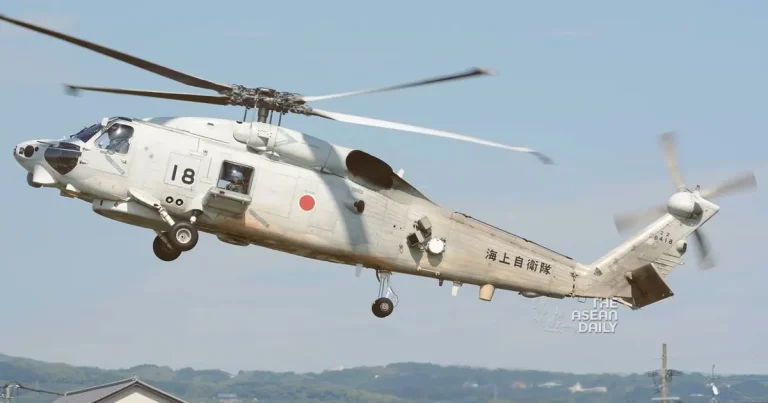21-4-2024 (TOKYO) Grave concerns mount as an extensive search operation continues for seven missing crew members after two Japanese military helicopters collided during a nighttime training exercise off the Izu Islands in the Pacific Ocean. The incident, which occurred overnight, has triggered a massive air and sea rescue effort, with one individual already recovered from the wreckage.
Addressing the nation, Japan’s Defence Minister, Minoru Kihara, provided crucial details, revealing that rescuers had located debris believed to be from the downed aircraft. “Rescuers spotted what is believed to be part of the aircraft in the sea, and we believe that the two helicopters crashed. At this point, the cause is unknown, but firstly, we do our utmost to save lives,” Kihara solemnly stated, adding that the helicopters were engaged in “drills to counter submarines at night.”
The unfolding crisis has gripped the nation, with authorities working tirelessly to locate the missing personnel and unravel the circumstances surrounding the collision. According to reports from Japan’s national broadcaster, NHK, the incident transpired during night-time drills conducted by the Maritime Self-Defense Force (MSDF) to counter submarine threats.
The first indications of trouble emerged at approximately 10:38 pm local time (1338 GMT) on Thursday when communication was lost with one of the helicopters operating off the island of Torishima. Merely a minute later, an emergency signal was received from the same aircraft, heightening concerns.
Alarmingly, around 11:04 pm, communication was severed with the second helicopter in the vicinity, compounding the crisis and prompting immediate search and rescue operations.
The helicopters involved in the incident were identified as Mitsubishi SH-60K models, primarily utilized by the MSDF for maritime operations launched from naval destroyers.
Notably, the MSDF has stated that no other aircraft or vessels were present in the nearby waters at the time of the collision, effectively ruling out the involvement of external parties.
The incident has drawn inevitable comparisons to previous accidents involving Japanese military aircraft, highlighting the inherent risks associated with such operations.
In November of the previous year, a US Osprey military aircraft crashed off Japan, resulting in the tragic loss of all eight personnel on board and prompting the subsequent grounding of similar aircraft by both the United States and Japan.
Last April, a Japanese army UH-60JA helicopter carrying 10 individuals crashed off Miyako Island in southern Okinawa, with no survivors.
Furthermore, in January 2022, a Japanese fighter jet crashed off the central Ishikawa region, claiming the lives of two pilots, while in 2019, a pilot was killed when an F-35A stealth jet crashed into the sea after taking off from northeastern Japan during a training mission.




